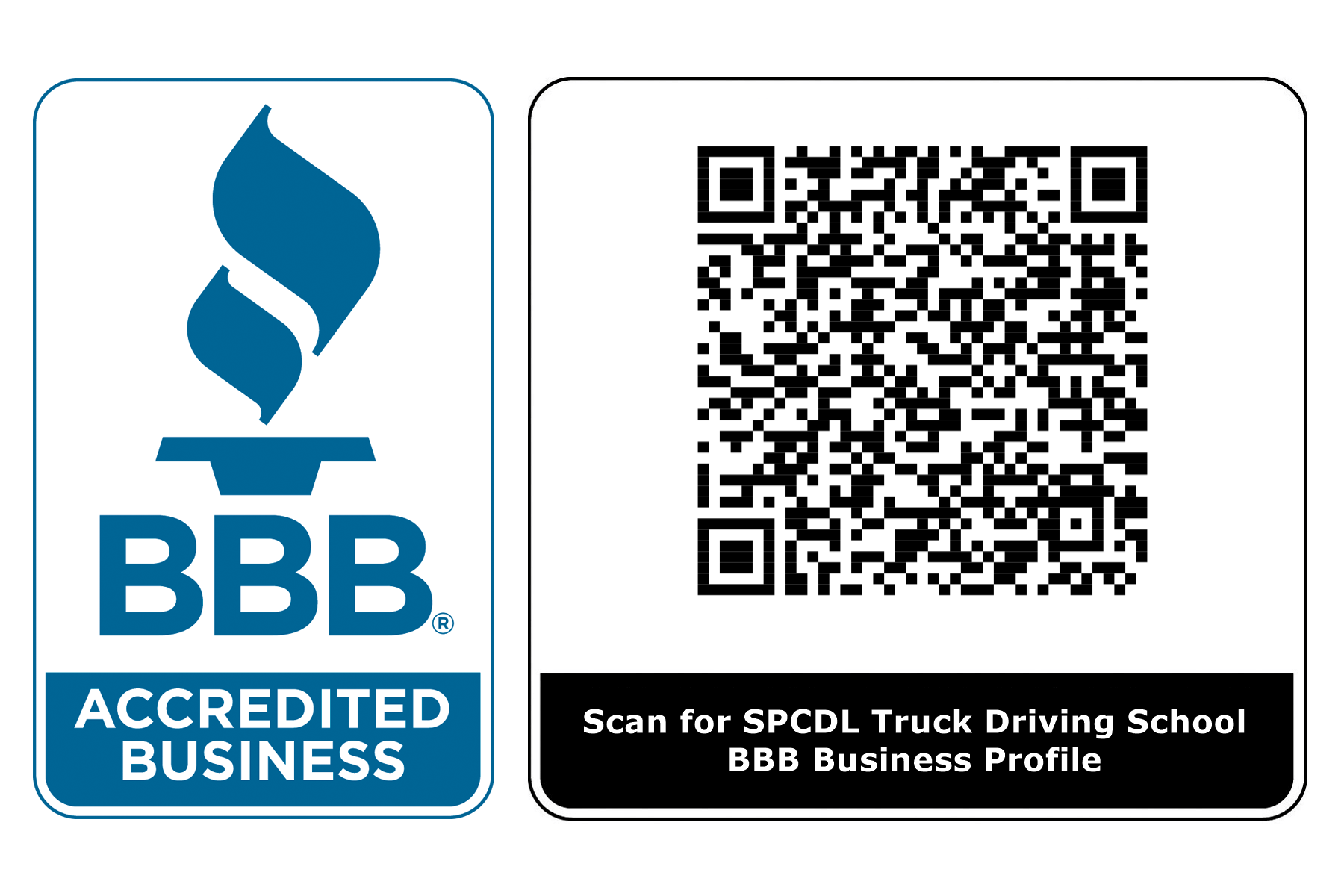NHTSA Investigates Automatic Emergency Braking Systems

NHTSA Investigates Automatic Emergency Braking Systems: What Truck Drivers Need to Know
The National Highway Traffic Safety Administration (NHTSA) plays a critical role in ensuring road safety across the United States. One of its current focuses is investigating Automatic Emergency Braking (AEB) systems, particularly in commercial vehicles like trucks. As these braking systems become increasingly common in modern vehicles, concerns have been raised about their reliability and effectiveness, especially when it comes to heavy-duty trucks on busy highways.
For truck drivers, understanding how these systems work and making sure they’re functioning properly is essential to maintaining safety on the road. At SPCDL Truck Driving School, we train students to be aware of their vehicle’s braking systems, from traditional air brakes to modern AEB systems. By learning how to inspect, maintain, and respond to potential braking issues, our students are better equipped to handle any situation while on the job.
What is an Automatic Emergency Braking (AEB) System?
An Automatic Emergency Braking (AEB) system is a safety feature designed to prevent or mitigate collisions by automatically applying the brakes when the vehicle detects an impending crash. Using a combination of sensors, cameras, and radar, the AEB system monitors the vehicle’s surroundings. If the system detects an obstacle in the vehicle’s path and the driver does not react quickly enough, it automatically applies the brakes to either prevent the collision or lessen its impact.
These systems are becoming standard in both passenger vehicles and commercial trucks, as they help reduce accidents caused by driver inattention or delayed reaction times. For truck drivers, who often drive long hours on busy highways, AEB systems can provide an extra layer of safety, particularly in congested traffic or urban areas where sudden stops might be required.
How Does an AEB System Work?
The AEB system uses a variety of technologies to monitor the road and detect potential collisions. Here’s how it works:
- Sensors and Cameras: These devices continuously scan the road for obstacles, such as vehicles, pedestrians, or objects.
- Radar: Radar technology helps the system gauge the distance between the truck and any obstacles in its path.
- Computer Algorithms: The system processes data from the sensors and radar, determining whether the truck is at risk of a collision.
- Automatic Braking: When the system identifies a potential collision and the driver fails to respond in time, the AEB system activates the brakes automatically to prevent or reduce the severity of the impact.
While AEB systems are a valuable tool for enhancing safety, they are not foolproof. Malfunctions or false activations can occur, and truck drivers need to be aware of how to handle these situations.
Why is NHTSA Investigating AEB Systems?
The NHTSA is currently investigating reports of faulty AEB systems in commercial vehicles. Some drivers have reported incidents where the AEB system either failed to engage when necessary or activated unexpectedly without cause, leading to sudden, unnecessary stops. Such malfunctions could pose significant risks, particularly for large commercial trucks on highways where sudden braking could cause accidents.
Key Concerns Driving the Investigation:
- False Activations: AEB systems sometimes activate without an actual obstacle present, causing the truck to brake suddenly and unexpectedly. This can lead to accidents, especially if the vehicles behind the truck don’t have enough time to react.
- System Failures: In some cases, the AEB system fails to activate when a collision is imminent, putting the driver and other road users at risk.
- Driver Overreliance: There is also concern that drivers may become too reliant on the AEB system, assuming it will always function correctly. When the system malfunctions or doesn’t engage, the driver may not be prepared to react in time.
The NHTSA investigation is ongoing, and while AEB systems have been proven to reduce collisions in many cases, the potential for malfunction means that drivers must remain vigilant and not rely solely on the system for their safety.
Importance of Regular Maintenance and AEB System Checks
Given the potential issues with AEB systems, it’s critical that commercial truck drivers regularly check and maintain these systems. While AEB systems are designed to assist drivers, they should be viewed as an extra layer of protection, not a replacement for manual driving skills and awareness.
Best Practices for Maintaining AEB Systems:
- Routine Calibration: The sensors and cameras used by AEB systems must be regularly calibrated to ensure accuracy. If they are misaligned, the system may not detect obstacles correctly.
- Clear Obstructions: Sensors and cameras must remain unobstructed. Dirt, snow, or other debris can interfere with their ability to function properly.
- Software Updates: Manufacturers frequently release software updates for AEB systems to improve performance and address any bugs. Truck drivers should ensure that their system’s software is always up to date.
- Check for Recalls: Stay informed about any recalls or advisories related to AEB systems. If a recall is issued for a specific AEB component, it’s essential to address the issue immediately to avoid potential hazards on the road.
How SPCDL Truck Driving School Trains Students on AEB Systems
At SPCDL Truck Driving School, we understand that the safety of our students—and their future success as drivers—depends on their ability to thoroughly inspect and maintain all vehicle systems, including the AEB system. As part of our CDL training programs, we ensure that students know how to properly inspect and troubleshoot both modern and traditional braking systems.
SPCDL’s Training on AEB Systems:
- Hands-On Training: Students are given hands-on experience with trucks equipped with AEB systems, learning how to inspect and ensure the system is working properly.
- Pre-Trip Inspection Protocols: We emphasize the importance of a comprehensive pre-trip inspection that includes checking the AEB system. This ensures that students are prepared to identify and address any potential issues before they hit the road.
- Emergency Braking Response: Our instructors train students on how to react if the AEB system activates unexpectedly. This includes safe manual braking techniques and knowing when to override the system if necessary.
By teaching students how to inspect and maintain their vehicle’s braking systems, SPCDL Truck Driving School ensures that new drivers are confident and prepared to handle any situation, from routine stops to emergency braking.
Other Emergency Braking Systems and Safety Measures for Truck Drivers
While AEB systems are becoming more common, traditional braking systems remain a key component of commercial vehicle safety. At SPCDL Truck Driving School, we ensure that students are fully trained in maintaining and operating air brakes and other emergency braking systems found in commercial trucks.
Key Components of Air Brake Systems:
- Brake Pads and Drums: Regular inspection of brake pads and drums is essential to ensure effective stopping power.
- Air Compressors and Air Lines: Compressed air is essential for the operation of air brake systems.
- Emergency Brake Actuators: These components allow the driver to manually engage the brakes in an emergency situation. Ensuring that they are functioning properly is crucial.
In addition to AEB system training, we teach students how to:
- Perform Pre-Trip and Post-Trip Brake Inspections: Checking brake systems before and after each trip ensures they remain in proper working condition.
- Troubleshoot Common Brake Issues: Understanding how to recognize the signs of brake failure or wear allows drivers to address problems before they escalate.
- Respond to Brake Failures: In the rare event of a brake failure, knowing how to safely bring the truck to a stop using emergency braking techniques can prevent accidents.
The NHTSA investigation into Automatic Emergency Braking Systems highlights the importance of regular maintenance and safety checks for commercial truck drivers. While AEB systems offer an extra layer of protection, they are not infallible. Truck drivers must be diligent in maintaining these systems and ensuring their overall braking systems are safe and secure.
At SPCDL Truck Driving School, we take safety seriously. Our hands-on, one-on-one training programs equip students with the knowledge and skills they need to properly inspect, maintain, and operate both AEB systems and traditional braking systems. By choosing SPCDL, you can be confident that you’ll be prepared to handle any situation on the road, ensuring your safety and success as a commercial driver.
Are you ready to change your life with a new career? Contact SPCDL Truck Driving School today to learn more about our comprehensive CDL training programs and how we can help you succeed in the trucking industry.
Stay Informed with SP CDL Truck Driving School
At SPCDL Truck Driving School, we are committed to keeping you informed about all things related to Commercial Driving and commercial driver training. Our daily blogs cover the latest updates, safety tips, and industry news.
Call Us on (909) 353-9897 or Fill Out the Truck Driving School Get Started Form on Our Website Anytime and We Will Get in Touch with You.



